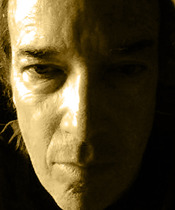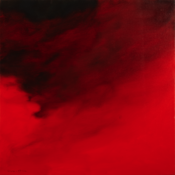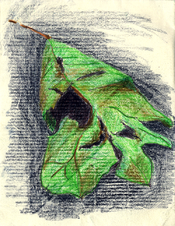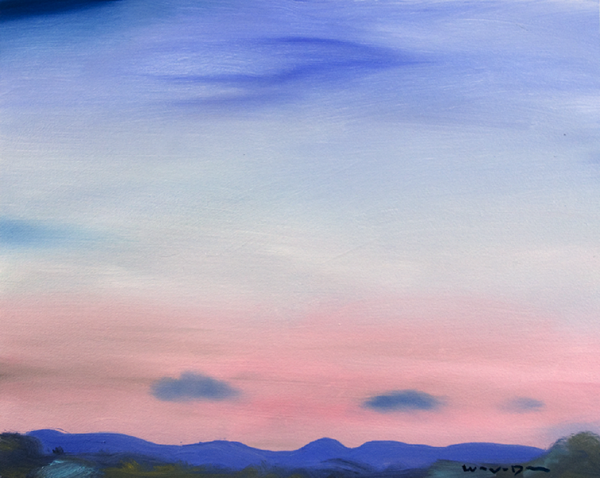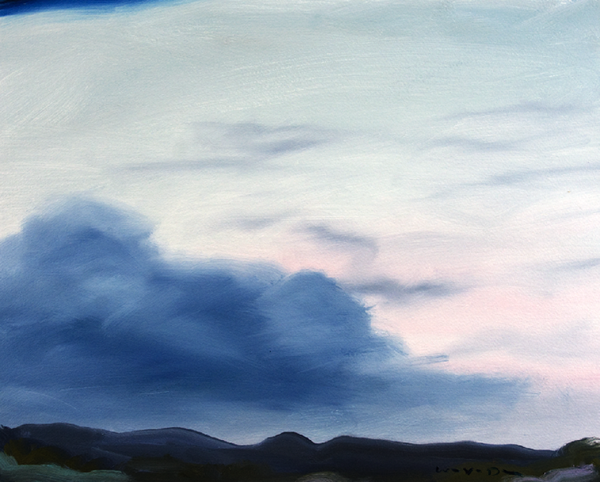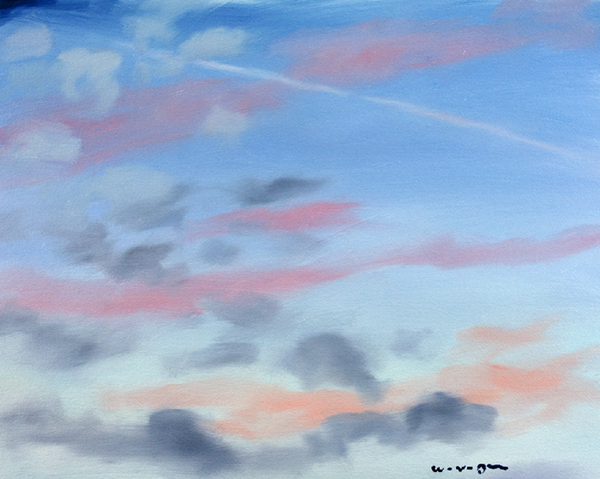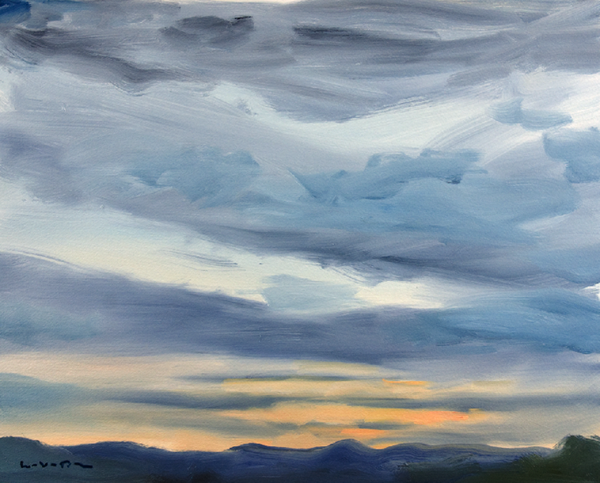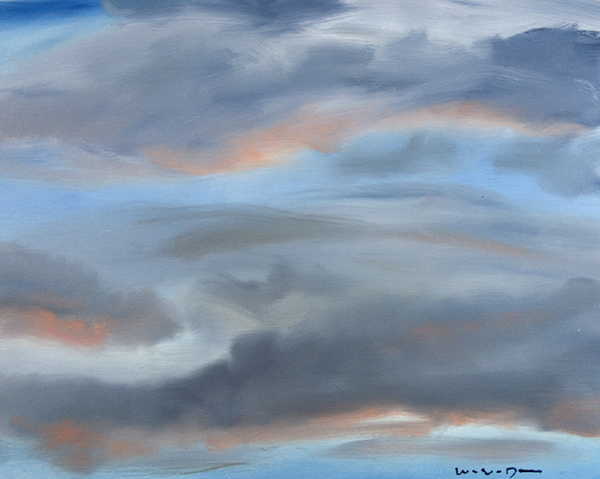 William Theodore Van Doren. Stony Point, Albemarle County, Va. Oil on paper, 16 x 20.
William Theodore Van Doren. Stony Point, Albemarle County, Va. Oil on paper, 16 x 20.
I’ve spent part of the last few walks with Flint looking at sumac. Today I was investigating a little bit of a sumac puzzle, a mystery perhaps only a painter would find mysterious. A color mystery.
This was in a place Laura and I dubbed the Scrubby Field – because – it’s – scrubby. (Most of our names for things around here are pretty much on this level: the Muddy Road [muddy], the Woods Road [in the woods], the Big Field [big], etc.) A field just above the north fork of the Rivanna River. Eight or so years ago it looked as if someone had perhaps cleared parts of it expressly for bird hunters – wide lanes were cleared and covered with tall grasses, alternating with areas of thick brush. Now everything’s overgrown (hence the name). One of the most successful overgrowers is sumac – bushes verging on trees, some approaching a height of 20 feet.
In late summer and fall the clusters of small sumac berries, if that’s the right word for them, will be the distinctive velvety dark scarlet. I always assumed this was staghorn sumac, but apparently true staghorn sumac doesn’t grow this far south. What we have is a cousin, scarlet sumac. Native Americans apparently had many uses for sumac, and I once tried to make tea from the clusters, following some Boy Scout instructions, by sealing them up in water, in a closed jar in the hot sun. Didn’t work.
Right now all the sumac clusters are in one stage or another of a visually interesting transition I’d never noticed before. Some clusters are still very immature, the fruit looks like tiny light green dots. What began to get my attention lately was the next stage, as the buds turned almost the color of ripe wheat waving in the breeze, although, with the remaining green undertone, they seemed more like the color of gold grapes.
Now, the color change I couldn’t understand, the beautiful golden clusters, as I saw so many across the field, seemed like they were turning a dull brown, as if they were drying up. This made no sense. This muddy autumnal brown didn’t look like it could possibly be a phase of any progression to brilliant deep red.
I looked closer – in fact, I had to look very closely. There actually was no dull brown in any part of the sumac. What I was seeing was the opening of tiny outer petals – gold, curling back like miniature wood shavings – and then, through the petals, the inner berry. The berries are two colors of pink, like a furled rosebud of a species developed to be mostly soft, light violet-pink with an edge of strong deep magenta. I don’t know if this inner berry in any way actually opens or unfurls, but at the moment it looks as though it would, and show more of the deep color.
So the off brownish sumac that looked like a result of two colors that can’t mix, was an illusion. The artist didn’t intend for us to see it that way.
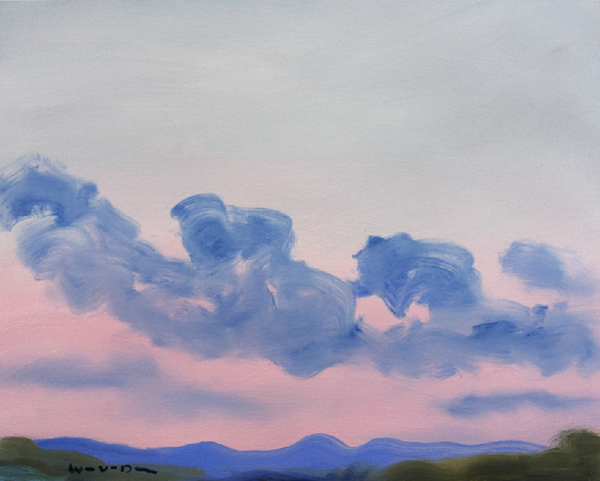 William Theodore Van Doren. Stony Point, Albemarle County, Va. Oil on canvas, 16 x 20.
William Theodore Van Doren. Stony Point, Albemarle County, Va. Oil on canvas, 16 x 20. Monday, August 3, 2009 at 09:19PM | by
Monday, August 3, 2009 at 09:19PM | by  BVD | in
BVD | in  Sunset Paintings,
Sunset Paintings,  Sunsetology | tagged
Sunsetology | tagged  Albemarle County,
Albemarle County,  Blue Ridge,
Blue Ridge,  Stony Point | | Comments Off
Stony Point | | Comments Off 
